Are you tired of looking at dusty window blinds? Cleaning your window blinds is crucial not only for maintaining a clean home but also for your health.
We will discuss the importance of cleaning window blinds and provide you with a list of essential tools you need for the task.
Learn how to clean different types of window blinds and get tips for maintaining clean blinds to keep them looking fresh and new!
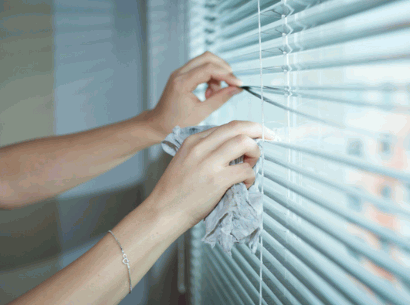
Why Is It Important To Clean Window Blinds?
It is crucial to clean window blinds regularly to maintain a healthy and hygienic environment in your home. Dust and dirt tend to accumulate on blinds over time, affecting the air quality and appearance of your living space. Regular cleaning also helps in prolonging the lifespan of your blinds and prevents the build-up of allergens that can impact your health.
When dust and dirt build-up on blinds, not only does it affect the overall cleanliness of your home, but it can also worsen respiratory conditions and allergies in your household.
Regular maintenance of blinds is a simple yet effective way to prevent these issues. Using a microfiber cloth or a gentle vacuum attachment can be a quick way to remove dust from blinds on a regular basis. For deeper cleaning, consider using a mild soap and water solution to wipe down the blinds thoroughly.
Dig deeper: How To Clean External Cladding

What Tools Do You Need To Clean Window Blinds?
To clean window blinds effectively, you will need specific tools such as a microfiber cloth, vacuum cleaner with a brush attachment, sponge or soft brush, mild detergent, and water. These tools are essential for removing dust, stains, and dirt from different types of blinds, ensuring a thorough cleaning process.
The microfiber cloth is ideal for gently wiping down the blinds without scratching the surface. It effectively traps dust particles and absorbs moisture, leaving the blinds clean and streak-free. The vacuum cleaner with a brush attachment helps in reaching tight spaces and crevices to suck up dust and debris efficiently.
- Using a sponge or soft brush dipped in a mixture of mild detergent and water can tackle stubborn stains without damaging the blinds.
- Remember to rinse the blinds with clean water after using detergent to prevent residue buildup.
By incorporating these tools into your cleaning routine, you can maintain your blinds in top condition, prolonging their lifespan and keeping your space looking fresh and inviting.
Microfiber Cloth
A microfiber cloth is an excellent tool for cleaning blinds as it effectively traps and removes dust and dirt particles from the blind’s surface. The soft and gentle nature of the microfiber material ensures that it does not scratch or damage the fabric or surface of the blinds.
Using a microfiber cloth is not only efficient in removing accumulated dirt and dust, but it also helps in maintaining the pristine condition of various blind materials such as vinyl, wood, aluminum, or fabric. The electrostatic properties of microfiber attract and hold onto dust particles, making it easier to clean without the need for harsh chemicals.
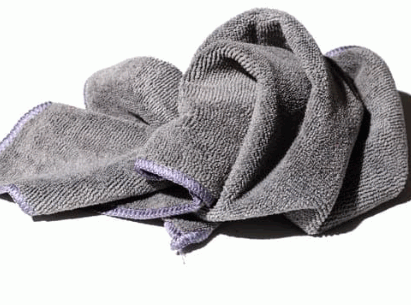
Vacuum Cleaner With Brush Attachment
A vacuum cleaner with a brush attachment is an essential tool for cleaning window blinds with slats. The brush attachment helps to remove dust and debris from the slats effectively, ensuring a thorough cleaning process. It also simplifies the cleaning of hard-to-reach areas and corners of the blinds.
In terms of maintaining the cleanliness of your blinds, this versatile tool plays a crucial role. The brush attachment not only cleans the surfaces but also prevents the build-up of allergens and dust mites, promoting a healthier living environment. Using a vacuum cleaner with a brush attachment eliminates the need for harsh chemicals, making it a safe and eco-friendly cleaning option.

Sponge Or Soft Brush
A sponge or soft brush is ideal for cleaning blinds with stubborn stains or sticky residue. These tools help to gently scrub the surface of the blinds without causing damage, ensuring that tough stains are effectively removed without compromising the integrity of the blinds.
When using a sponge, it is best to moisten it with a mild cleaning solution or warm soapy water to tackle those pesky stains. Avoid using harsh chemicals that could harm the material of the blinds.
For particularly tough spots, a soft brush can work wonders. Swirl the brush gently over the stain in a circular motion to lift the dirt without causing scratches or marks.
Remember to wipe down the blinds with a clean, damp cloth after cleaning to remove any excess residue and leave them looking fresh and spotless.
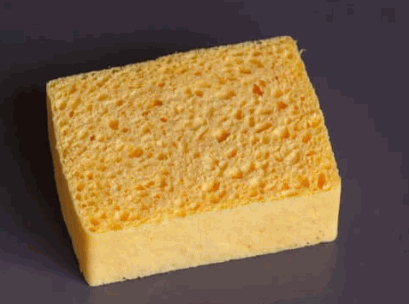
Mild Detergent Or Vinegar Solution
A mild detergent or vinegar solution can be used to tackle greasy or heavily soiled blinds. These solutions effectively break down dirt and grime, making it easier to clean the blinds thoroughly. Mixing them with water creates a gentle yet powerful cleaning solution for various types of blinds.
When preparing a cleaning solution, it is crucial to get the dilution ratios right. For a mild detergent, a general recommendation is to mix one tablespoon of detergent with a quart of water. Vinegar, on the other hand, can be diluted in a 1:1 ratio with water for an effective cleaning solution. The benefits of using these solutions extend beyond just cleaning; they also help maintain the material of the blinds without causing any damage.
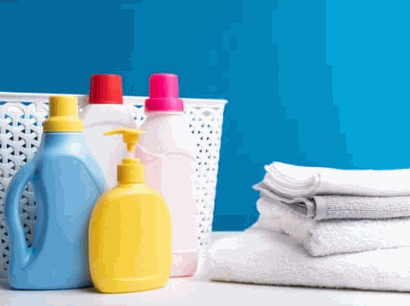
How To Clean Different Types Of Window Blinds
Cleaning different types of window blinds requires specific methods tailored to each material. From wood blinds to fabric blinds, knowing the appropriate cleaning techniques and tools ensures that you can maintain the cleanliness and longevity of your blinds effectively.
For wood blinds, start by dusting them with a microfiber cloth or vacuum cleaner attachment to remove loose dirt and debris. Then, mix a small amount of mild soap with water and gently wipe down the blinds with a soft cloth. Avoid using excessive water to prevent warping.
Similarly, faux wood blinds can be cleaned using the same method but be cautious not to use harsh chemicals that may damage the faux wood surface.
When cleaning vinyl blinds, you can use a solution of warm water and mild detergent to spot any stains. Avoid using abrasive cleaners that can scratch the vinyl.
Wood Blinds
Wood blinds require gentle cleaning to preserve their natural beauty and finish. Using a microfiber cloth or soft brush, dust the slats regularly to prevent the accumulation of dirt and maintain the wood’s appearance. Avoid using excessive water or harsh chemicals that can damage the wood.
To further protect the wood finish, consider using a wood cleaner specifically designed for blinds. Apply this cleaner sparingly using a slightly damp cloth, being careful not to oversaturate the wood. For tougher stains, a mild detergent diluted in water can be used, but make sure to wipe away any excess moisture immediately. It is crucial to dry the wood blinds thoroughly after cleaning to prevent warping or discoloration. Additionally, regular dusting and cleaning will not only enhance the aesthetic appeal of the blinds but also prolong their lifespan.
- Remember to inspect for any cracks or damage
- and address them promptly to avoid further deterioration.

Faux Wood Blinds
Faux wood blinds are easier to clean than real wood blinds, as they can withstand moisture and are less prone to warping. For stains or heavy soiling, use a mild detergent or vinegar solution to clean the slats thoroughly. Regular dusting with a microfiber cloth helps maintain their appearance.
Cleaning faux wood blinds is a simple task that can enhance the overall look of your space. The non-porous surface of faux wood makes them resistant to water damage, allowing you to use slightly wet cleaning materials without worrying about warping. To tackle stubborn stains, gently scrub the affected areas with a soft brush or sponge dipped in the cleaning solution. Remember to dry the blinds completely after cleaning to prevent any moisture-related issues.

Vinyl Blinds
Vinyl blinds are durable and easy to clean, requiring minimal maintenance. To clean vinyl blinds, wipe them down with a damp cloth or sponge using a mild detergent solution. Avoid excessive moisture to prevent damage to the vinyl material.
The simplicity and durability of vinyl blinds make them a popular choice for window treatments in many homes. Their smooth surface allows for easy cleaning without much hassle. When cleaning, it’s important to gently wipe the blinds in a vertical motion to prevent any potential damage to the slats. Proper maintenance can prolong the life of vinyl blinds, keeping them looking fresh and new for years to come.
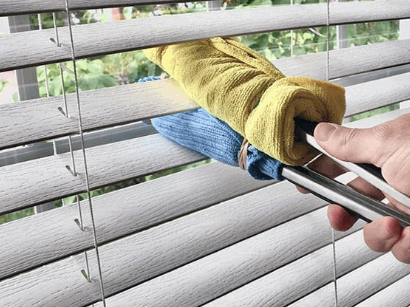
Fabric Blinds
Fabric blinds require gentle care to prevent damage to the delicate material. Regular dusting with a microfiber cloth helps maintain their cleanliness, while occasional spot cleaning with a mild detergent solution can address stains. Avoid saturating the fabric to prevent water damage.
When dusting fabric blinds, using a gentle touch is crucial to avoid the risk of snagging or tearing the fabric. A feather duster or a soft brush attachment on a vacuum cleaner can be used to gently remove dust and debris from the surface.
For spot cleaning, always test any detergent or cleaning solution on a small inconspicuous area first to ensure it doesn’t cause discoloration or damage. A mixture of mild soap and water applied with a soft cloth can effectively clean most stains without harming the fabric.

Tips For Maintaining Clean Window Blinds
To keep your window blinds clean and well-maintained, consider implementing some useful tips. Regular dusting, spot cleaning, and preventive measures can help preserve the appearance and functionality of your blinds, ensuring they remain in top condition for an extended period.
Start by dusting your blinds frequently using a microfiber cloth or a vacuum with a brush attachment to prevent dust buildup. This quick and easy maintenance task can significantly extend the lifespan of your blinds.
Spot cleaning is essential for tackling stains and marks. Use a mild soap or a gentle cleaning solution diluted in water to gently dab and clean affected areas. Avoid using harsh chemicals that might damage the material.
For preventive care, consider investing in a cleaning schedule to maintain the blinds regularly. This proactive approach can help in preventing dirt and grime accumulation, avoiding the need for extensive cleaning sessions.
Another useful tip is to address any spills or stains promptly. Blot the affected area with a clean cloth to absorb excess liquid and then proceed with the gentle cleaning method to prevent permanent marks.
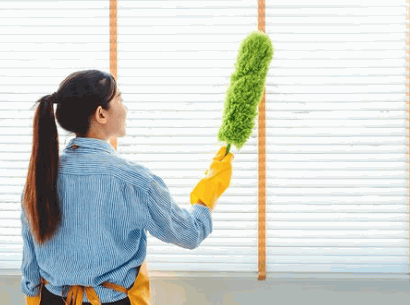
Precautions To Take While Cleaning Window Blinds
While cleaning window blinds, it is essential to observe certain precautions to ensure a safe and effective cleaning process. Use tools and cleaning solutions as instructed, avoid excessive moisture on blinds, consider using a HEPA filter vacuum to minimize dust dispersion, and prioritize safety to protect both your health and the blinds.
Proper ventilation is key to prevent inhaling harmful particles while cleaning, so open windows or use fans to ensure fresh air circulation. Wearing gloves and a mask can safeguard your skin and respiratory system from potential irritants. Remember to test any cleaning solutions on a small, inconspicuous area of the blinds first to avoid damage. Incorporating these safety measures and proper tool usage will not only result in sparkling clean blinds but also contribute to a healthier living environment.
Conclusion
Maintaining clean window blinds is essential for a healthy indoor environment and prolonging the lifespan of your blinds. By following proper cleaning techniques and utilizing the right tools and solutions, you can ensure that your blinds remain in excellent condition, enhancing the aesthetics and functionality of your living space.
Clean blinds not only improve the air quality within your home by reducing dust and allergens but also contribute to a visually appealing environment. Regular cleaning helps prevent dirt buildup, which can lead to discoloration and deterioration of different blind materials such as fabric, wood, or vinyl. Consistent maintenance also reduces the risk of mold growth, which can be harmful to respiratory health.

